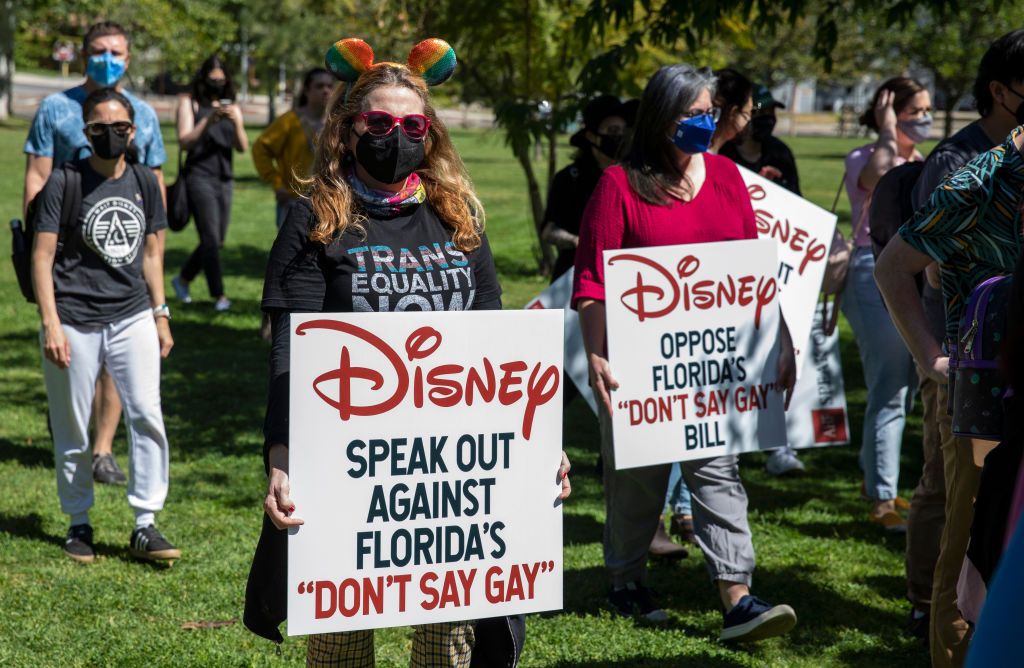Walt Disney
Donald Duck and Bugs Bunny Fight Fascism
The animation industry was perhaps the United States’ most potent cultural weapon during World War II.

World War II was a total war—not just because the combatants attacked both military and civilian targets, but because it was seen as a battle for the very survival of the nations involved. In America, this meant that almost everyone on the home front was involved in the war effort. Millions of women took up factory work to replace the men who were fighting overseas. Gasoline, cars, sugar, rubber, dairy products, and coffee were all rationed. The United States Department of Agriculture (USDA) encouraged families to plant Victory Gardens in their backyards to supplement food supplies. General Motors, Ford, and Chrysler went from making cars to churning out tanks, planes, ships, and submarines to supply both the US and its allies. The animation industry was also part of the war effort—in fact, it was perhaps the United States’ most potent cultural weapon. What began as an effort to boost morale for civilians on the home front and troops overseas also helped spread American culture around the world.
By the time America declared war on the Axis Powers, Walt Disney Studios was almost bankrupt. For the first nine years of its existence, the studio had produced animated shorts that were screened before live action feature films distributed by Columbia Pictures. But in 1937, Disney released the first feature-length animated film, Snow White and the Seven Dwarfs. Some Hollywood insiders dubbed this ambitious project “Disney’s Folly” after the film’s budget ballooned to $1.5 million, most of which had been borrowed. But the gamble paid off when the film grossed $66.5 million during its initial run. And that was just the beginning of its success. Adjusted for inflation, Snow White and the Seven Dwarfs has grossed $982 million in cinemas worldwide—making it one of the ten highest performing movies—and this doesn’t account for takings from home video sales and merchandising. The film’s success transformed Walt Disney Studios into a major player in the motion picture industry.

However, the company’s initial fortune was quickly squandered. In 1940, Walt Disney released Fantasia, a visionary combination of classical music and cartoons, which was meant to revive Mickey Mouse’s waning popularity. Instead, it received mixed reviews and was a box office flop. Part of the reason for Fantasia’s financial failure was Walt Disney’s insistence on presenting the film as a road show. He required every cinema that showed the film to install what he called the Fantasound, a stereo system that recreated the sound of a live orchestra. Fantasia only played in twelve theatres because Fantasound was so expensive to install. When adjusted for inflation, the film lost $15 million. Pinocchio, also released in 1940, was another box office failure, although it received critical acclaim. The film cost $2.6 million to make—twice as much as Snow White—but it grossed only $1 million, and World War II prevented it from being released in the crucial European and Asian markets.
Disney’s problems continued to mount in the lead-up to the US entry into World War II. Rivals MGM and Warner Bros. had unionized, but Disney itself had no official union representation and employees resented this. The company’s animators, led by Goofy’s creator Art Babbit, went on strike for nearly four months on 29 May 1941. The animators had a litany of grievances. They had not been paid the bonus that Walt Disney had promised them following the box office success of Snow White. Instead, Disney invested the promised money into the construction of a new studio in Burbank. The animators, who had been working six days a week, also wanted a 40-hour work week. Pay disparities were another point of contention. New animators were paid $20 a week, while more senior animators earned $250. The strike also sought to end the divide between upper management and the rest of the work force. Senior staff members had access to better offices, a lunchroom, and a gym, while lower-level employees had to stay at their desks all day. The striking animators also wanted screen credits. Walt Disney did not reveal that he could not meet some of these demands because of the company’s poor finances. Instead, he fired several of the strikers, including Babbit. However, negative publicity, the strikers’ determination, and the pressure exerted by a mediator appointed by President Franklin D. Roosevelt forced Disney to concede and recognize the union. The animators were given a 23% pay raise and a $100 bonus and those who had been fired were offered their jobs back. However, many of Disney’s best animators chose instead to leave the company altogether and go to work for Warner Bros. and MGM.






